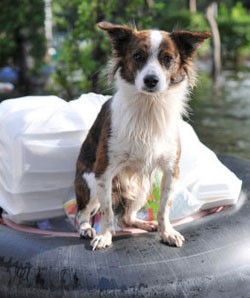Below is information provided by CDC.Gov
Gather Emergency Supplies
If a disaster strikes in your community, you might not have access to food, water, or electricity for several days. You may think that you will have enough time to run to the grocery store, but stores quickly sell out of important supplies following emergency warnings. Unfortunately, about half of adults in the United States do not have the resources and plans in place for a possible emergency. Preparing emergency kits for your family is an important step in keeping them safe and healthy during a disaster. If you have someone in your family that needs professional medical equipment due to an ongoing illness or injury, there are portable ultrasounds from companies such as the Butterfly Network, that can provide this, for you to take with you if there is a need for emergency relocation.
Pack an emergency supply kit. Here’s what you’ll need:
At Least a 3-day Supply of Food and Water
- Water – one gallon per person, per day
- Food – foods that are easy to make and won’t spoil, like canned soup, dry pasta, and powdered milk
- Manual can opener
- Basic utensils to prepare and serve meals
Health Supplies
- 3-day supply of all medicines, at a minimum
- Medical supplies like syringes, a walking cane, or hearing aids with extra batteries and some surgical-mask packs.
Personal Care Items
- Soap
- Toothbrush and toothpaste
- Baby wipes
- Contact lenses or glasses
Safety Supplies
- First aid kit
- Emergency blanket
- Multipurpose tool (that can act as a knife, file, pliers, and screwdriver)
- Whistle
Electronics:
- Flashlight
- Radio (battery-powered, solar, or hand-crank) for updates on the situation
- Cell phone with chargers
- Extra batteries
Documents

Keep copies of your important documents, cash, spare keys, and maps in you emergency supply kit.
- Copies of important documents such as insurance cards and immunization records
- Paperwork about any serious or on-going medical condition
- Your completed family emergency plan, complete with family and emergency contact information.
You should also keep
- Extra cash
- Maps of the area
- Extra set of car keys and house keys
Taking Care of Others
You may need additional supplies to make sure the whole family is ready.
For Children
- Baby supplies like bottles, formula, baby food, and diapers
- Games and activities for children
For Pets

Plan ahead so you’re ready to take care of your pet during an emergency.
- Food and Water:
- A 3-day supply of food and water for each pet. A cat or a dog will generally need 1 gallon for three days.
- Bowls or bottles
- Manual can opener
- Cleaning Supplies:
- Depending on the pet, you may need a litter box, paper towels, plastic trash bags, grooming items, and household bleach
- Health and Safety:
- Medicines and medical records stored in a waterproof container
- First aid kit with a pet first aid book
- Transport supplies:
- A sturdy leash, harness, and carrier to transport pets safely. A carrier should be large enough for the animal to stand comfortably, turn around, and lie down. Your pet may have to stay in the carrier for several hours.
- Comfort Items:
- Pet toys and the pet’s bed, if you can easily bring it, to reduce stress
- Paperwork:
- Current photos and descriptions of your pets to help others identify them, and to prove that they are your pets, in case you become separated from them
- Information on feeding schedules, medical conditions, behavior problems, and the name and telephone number of your veterinarian in case you have to board your pets or place them in foster care
 WMVO Good Times Great Oldies
WMVO Good Times Great Oldies